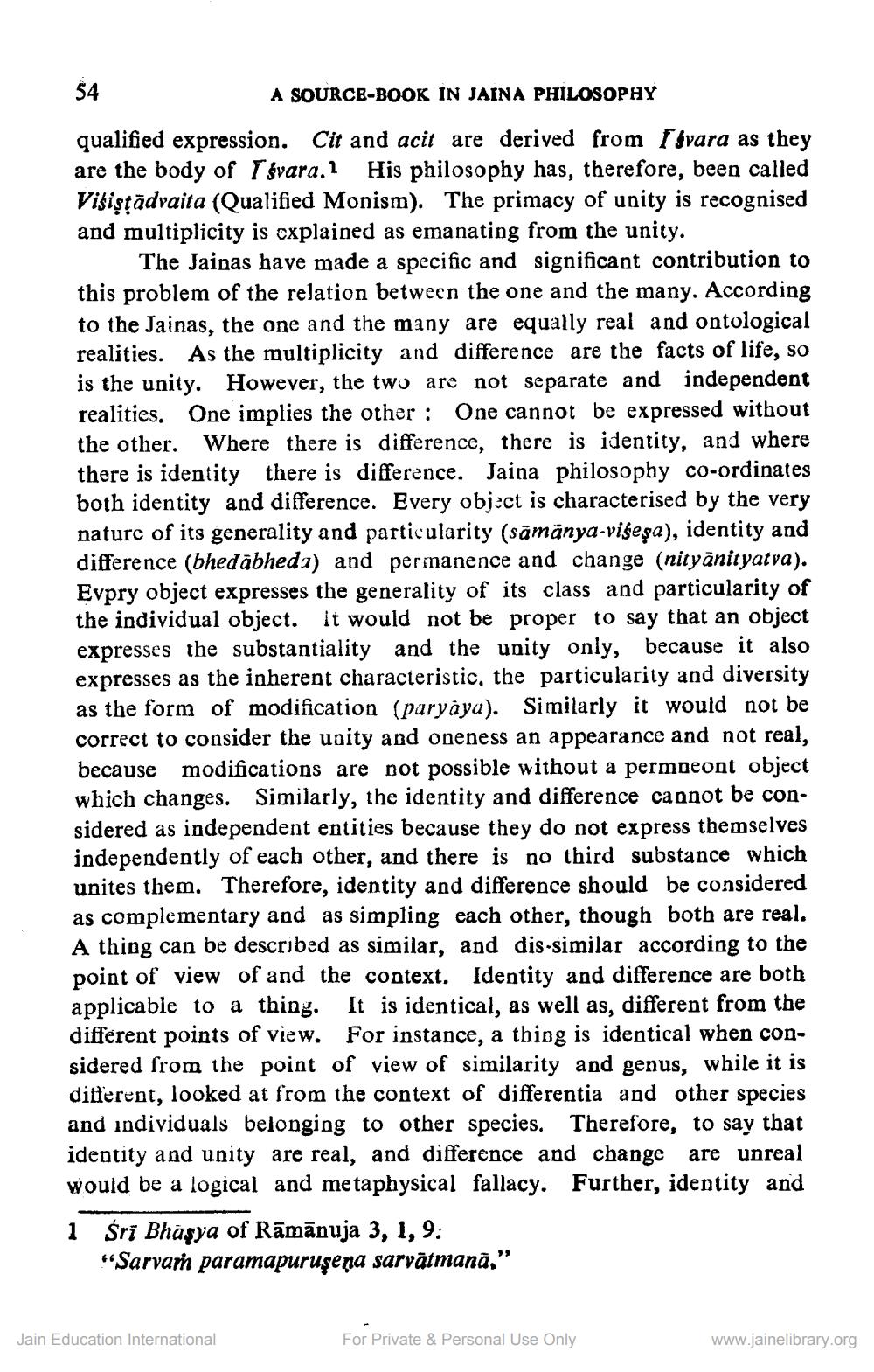________________
54
A SOURCE-BOOK IN JAINA PHILOSOPHY
qualified expression. Cit and acit are derived from Ivara as they are the body of Isvara. His philosophy has, therefore, been called Visiṣṭādvaita (Qualified Monism). The primacy of unity is recognised and multiplicity is explained as emanating from the unity.
the other.
The Jainas have made a specific and significant contribution to this problem of the relation between the one and the many. According to the Jainas, the one and the many are equally real and ontological realities. As the multiplicity and difference are the facts of life, so is the unity. However, the two are not separate and independent realities. One implies the other: One cannot be expressed without Where there is difference, there is identity, and where there is identity there is difference. Jaina philosophy co-ordinates both identity and difference. Every object is characterised by the very nature of its generality and particularity (sāmānya-viŝeşa), identity and difference (bhedabheda) and permanence and change (nityānityatva). Evpry object expresses the generality of its class and particularity of the individual object. It would not be proper to say that an object expresses the substantiality and the unity only, because it also expresses as the inherent characteristic, the particularity and diversity as the form of modification (paryaya). Similarly it would not be correct to consider the unity and oneness an appearance and not real, because modifications are not possible without a permneont object which changes. Similarly, the identity and difference cannot be considered as independent entities because they do not express themselves independently of each other, and there is no third substance which unites them. Therefore, identity and difference should be considered as complementary and as simpling each other, though both are real. A thing can be described as similar, and dis-similar according to the point of view of and the context. Identity and difference are both applicable to a thing. It is identical, as well as, different from the different points of view. For instance, a thing is identical when considered from the point of view of similarity and genus, while it is different, looked at from the context of differentia and other species and individuals belonging to other species. Therefore, to say that identity and unity are real, and difference and change are unreal would be a logical and metaphysical fallacy. Further, identity and 1 Śrī Bhasya of Rāmānuja 3, 1, 9. "Sarvam paramapuruşeņa sarvātmanā,”
Jain Education International
For Private & Personal Use Only
www.jainelibrary.org




